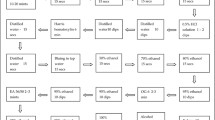Abstract
Background
Anal intraepithelial neoplasia (AIN) rarely receives as much publicity as its neighbouring orifice, the cervix. As in the cervix, intraepithelial neoplasias are precursors to cancer in the anal canal. AIN and cervical interstitial neoplasia (CIN) undergo dysplasia as a consequence of human papillomavirus (HPV) infection. Since the advent of screening with the Pap smear in CIN, cervical cancer has plummeted to a fifth of its initial incidence. Anal cancer, however, has been rising, with a predilection for human immunodeficiency virus-infected men. HPV causes a squamous epithelial dysplasia and converts healthy tissue into AINs of increasing severity until anal cancer manifests.
Clinical case
This article describes a clinical case of anogenital HPV infection refractory to medical and surgical therapy. It also describes an effective surgical excision technique associated with a good cosmetic outcome.
Conclusions
The paper concludes by briefly discussing the implications of a national screening programme against AIN in the future.






Similar content being viewed by others
References
Daling JR, Weiss NS, Hislop TG et al (1987) Sexual practices, sexually transmitted diseases, and the incidence of anal cancer. N Engl J Med 317:973–977
Palefsky JM (2000) Anal squamous intraepithelial lesions in human immunodeficiency virus-positive men and women. Semin Oncol 27:471–479
Johnson LG, Madeleine MM, Newcomer LM, Schwartz SM, Daling JR (2004) Anal cancer incidence and survival: the surveillance, epidemiology, and end results experience, 1973–2000. Cancer 101:281–288. doi:10.1002/cncr.20364
Goldie SJ, Kuntz KM, Weinstein B, Freedberg KA, Welton ML, Palefsky JM (1999) The clinical effectiveness and cost-effectiveness of screening for anal squamous intraepithelial lesions in homosexual and bisexual HIV-positive men. JAMA 281:1822–1829. doi:10.1001/jama.281.19.1822
Matthews WC (2003) Screening for anal dysplasia associated with human papillomavirus. Top HIV Med 11(2):45–49
Kulasingam SL, Bernard S, Barnabas RV, Largeron N, Myers ER (2008) Adding a quadrivalent human papillomavirus vaccine to the UK cervical cancer screening programme: a cost-effectiveness analysis. Cost Eff Resour Alloc 6:4. doi:10.1186/1478-7547-6-4
Kim JJ, Andres-Beck B, Goldie SJ (2007) The value of including boys in an HPV vaccination programme: a cost-effectiveness analysis in a low-resource setting. Br J Cancer 97(9):1322–1328. doi:10.1038/sj.bjc.6604023
Acknowledgment
Written consent was obtained from the patient prior to the publication of this case.
Author information
Authors and Affiliations
Corresponding author
Rights and permissions
About this article
Cite this article
Oon, S.F., Hanly, A. & Winter, D.C. Pap smears for men: a vision of the future?. Ir J Med Sci 179, 459–462 (2010). https://doi.org/10.1007/s11845-009-0340-6
Received:
Accepted:
Published:
Issue Date:
DOI: https://doi.org/10.1007/s11845-009-0340-6




